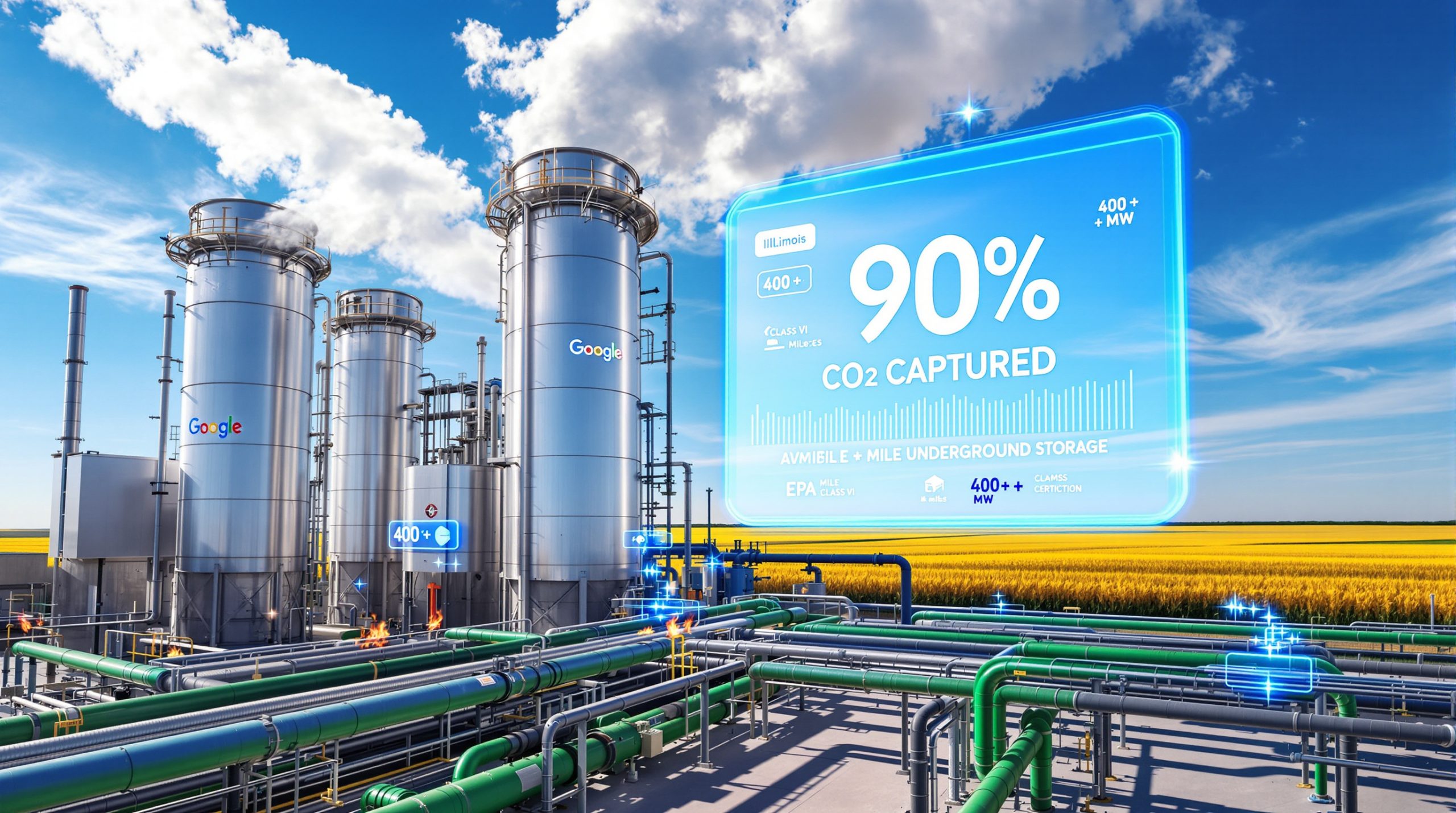What's Happening in the Aluminum Market This Week?
The aluminum market continues to display resilience amid conflicting signals, with prices maintaining elevated levels despite clear indications of weakening demand. This paradoxical situation stems primarily from ongoing inventory depletion, which provides crucial price support during a period when seasonal factors would typically drive more significant price corrections.
According to the latest aluminum market weekly report, domestic aluminum ingot inventory continues its destocking trend for the fourth consecutive week, creating an effective price floor despite growing evidence of demand softening. This inventory support comes at a critical time as the manufacturing sector enters its traditional summer slowdown.
Current Market Sentiment and Key Indicators
The Federal Reserve's recent decision to maintain interest rates has stabilized macroeconomic conditions, though officials specifically noted concerns about tariffs impact markets in the coming months. These tariff considerations are particularly relevant for aluminum markets, where cross-border trade flows significantly impact regional pricing dynamics.
"The current pricing resilience masks underlying weakness in consumption patterns," notes SMM's senior aluminum analyst. "Spot premiums and discounts have retreated substantially from their May highs, with Guangdong-Shanghai premiums narrowing by nearly 35% in just three weeks."
Most telling is the aluminum rod segment, where a stark supply-demand imbalance has developed:
- Supply levels remain stubbornly high despite production cutbacks
- Demand has deteriorated significantly, particularly in construction and automotive applications
- Processing fees have plummeted to historically low levels (below 180 yuan/ton in some regions)
- Producer margins have compressed to unsustainable levels at many facilities
This processing fee collapse represents a clear warning signal about underlying consumption weakness that has yet to fully manifest in primary aluminum pricing.
Critical Supply-Demand Imbalances Emerging
Beyond the rod segment, several critical supply-demand imbalances are emerging across the aluminum value chain. Most concerning is the divergence between futures market performance and physical market realities. While aluminum futures logged four consecutive days of gains last week, spot market transactions showed persistent weakness, particularly in secondary aluminum segments.
The current market exhibits classic signs of transitional imbalance:
- Primary production: Operating rates remain stable at approximately 87.4% utilization
- Semi-finished goods: Significant inventory accumulation, particularly in less specialized products
- Finished products: Order books thinning with extended lead times becoming rare
- Processing fees: Compressed to multi-year lows across multiple segments
Market participants report that consumers are increasingly hesitant to build inventory, adopting just-in-time purchasing strategies that further pressure producers. This behavior typically precedes more significant price corrections once inventory support diminishes.
"The aluminum market is currently balanced on a knife's edge," explains industry consultant Zhang Wei. "Low physical inventory provides a firm price floor, but deteriorating consumption patterns are creating unsustainable pressure on processing margins throughout the value chain."
How Are Raw Material Markets Performing?
The upstream segments of the aluminum supply chain are sending mixed signals, with varied performance across key input materials. This divergence creates both opportunities and challenges for primary aluminum producers seeking to optimize production economics during a period of consumption uncertainty.
Bauxite Market Conditions
Bauxite prices continue to display regional and quality-based variations without establishing a clear directional trend. According to SMM data, high-grade Guinean bauxite maintains a significant premium over domestic Chinese sources, though this gap has narrowed by approximately 8% over the past month due to softening demand and freight rate moderation.
Key bauxite market dynamics include:
- Domestic Chinese bauxite prices fluctuating between 420-465 yuan/ton depending on alumina content
- Australian bauxite shipments to China declining 12% year-over-year as alternative sources gain market share
- Indonesian exports continuing to increase despite earlier regulatory concerns
- Overall supply conditions remaining stable with adequate availability across major consuming regions
"The bauxite market has achieved a temporary equilibrium," notes mining analyst Lin Chen. "Supply constraints that dominated 2024 discussions have largely resolved, though quality disparities continue to drive significant price differentiation."
Weather conditions in key production regions remain favorable, with no significant disruptions reported at major mining operations or shipping terminals. This stability has allowed inventory levels at major alumina refineries to rebuild from the critical lows observed earlier in the year. Additionally, ongoing bauxite project benefits continue to attract investment despite market uncertainties.
Alumina Price Movements
Alumina has experienced more pronounced price weakness compared to bauxite, with spot prices declining steadily over recent weeks. This downward trend stems primarily from loosening supply conditions as production capacity utilization rates maintain steady levels despite slower demand growth from primary aluminum smelters.
The current spot alumina market exhibits several noteworthy characteristics:
- Prices have declined approximately 7.5% from April peaks
- Australian index prices maintaining premium over domestic Chinese material
- Production capacity utilization stabilizing around 85-87%
- Energy and caustic soda costs providing effective floor against further significant declines
"The cost structure for alumina production creates natural resistance to prices falling below $290/ton," explains commodities analyst Dr. Sarah Johnson. "Energy inputs, caustic soda requirements, and maintenance capital expenditures establish a production floor that prevents sustained operation below this threshold."
This cost-based support suggests alumina prices are approaching levels where production discipline may emerge if further weakness develops. Several smaller refineries have already announced maintenance scheduling adjustments to limit output during the current soft demand period.
What's Happening in Downstream Aluminum Sectors?
Downstream aluminum segments display varied performance, with certain specialized niches maintaining strength while broader commodity applications face increasing pressure. This divergence creates both challenges and opportunities across the value chain.
Aluminum Billet and Extrusion Market Analysis
A clear inventory inflection point has emerged in the aluminum billet segment, with stocks beginning to accumulate after several months of destocking. This inventory rebuild signals weakening demand from extruders, particularly those serving construction and general industrial applications.
Processing fees for conversion services continue their downward trajectory amid intensifying competitive pressures, with some processors reporting fee compression of over 25% compared to January levels. This margin pressure has forced operational adjustments, including:
- Reduced production shifts at multiple facilities
- Postponement of capacity expansion projects
- Increased focus on higher-margin specialty alloys
- Consolidation discussions among smaller players
"The market is experiencing a classic margin squeeze," notes industry veteran Wang Lei. "When processor fees drop below 200 yuan/ton, operational sustainability becomes questionable for all but the most efficient producers."
Extrusion order patterns show notable divergence across application segments. While construction and general industrial demand has weakened substantially, automotive and high-performance applications maintain relative resilience. This split market creates challenges for processors with fixed capacity allocations.
Overall operating rates have declined to approximately 68% across the extrusion industry, down from 74% in April and 82% in January. This reduced utilization reflects both seasonal patterns and broader economic concerns, particularly in property-related sectors.
Secondary Aluminum Market Challenges
The secondary aluminum segment faces particularly pronounced challenges despite seemingly supportive signals from the futures market. While futures logged four consecutive days of gains last week, physical market transactions showed persistent weakness across most recycled alloy categories.
The ADC12 alloy, widely used in automotive die casting, faces especially limited upside potential due to deepening off-season effects in both domestic and export markets. Price premiums for high-quality secondary material have compressed significantly, reflecting:
- Weakening automotive production forecasts
- Increased availability of primary aluminum at competitive prices
- Rising scrap collection rates despite lower prices
- Narrowing spread between primary and secondary material
Recycling margins face pressure from both input cost volatility and compressed selling prices. Secondary producers report that the typical discount to primary material has narrowed to historically low levels, limiting the economic advantage of recycled content even as sustainability considerations drive increased interest.
Regional demand variations have become increasingly pronounced, with coastal export-oriented facilities reporting significantly better conditions than inland producers focused on domestic markets. This geographic divergence creates logistical challenges for material flow optimization.
How Are Auxiliary Materials Markets Performing?
The specialized inputs required for aluminum production provide important signals about broader industry dynamics, with price movements often foreshadowing shifts in primary metal markets. Current conditions in these auxiliary segments suggest stable near-term fundamentals despite downstream pressures.
Prebaked Anode Market Conditions
Prebaked anode prices display general stability with a slight upward bias, supported primarily by input cost factors rather than demand strength. Petroleum coke and coal tar pitch, the primary raw materials for anode production, have experienced modest price increases due to broader energy market dynamics.
The anode market exhibits several notable characteristics:
- Price stability despite fluctuating aluminum production rates
- Slight premium for low-sulfur material persisting due to environmental regulations
- Production capacity adjustments responding to primary aluminum demand signals
- Lead times shortening from 4-6 weeks to 3-4 weeks for standard specifications
Cost support maintains an effective floor against significant price deterioration, with energy and raw material inputs accounting for approximately 78% of production costs. This cost structure limits producers' ability to discount during periods of weaker demand without compromising operational viability.
"Anode pricing tends to lag aluminum market movements by 4-6 weeks," explains materials specialist Dr. Liu Wei. "The current stability suggests producers anticipate aluminum production rates will maintain current levels despite downstream pressures."
Aluminum Fluoride Market Dynamics
Aluminum fluoride prices maintain remarkable stability despite weak supply-demand fundamentals, with most transactions occurring within a narrow 2-3% range over recent months. This price discipline reflects the concentrated nature of production and the essential role this material plays in the electrolytic reduction process.
Key market dynamics include:
- Production capacity utilization adjusted to approximately 72% to match consumption patterns
- Import-export flows responding to regional price differentials, particularly between Asian and European markets
- Long-term contract structures limiting spot market volatility
- Fluorspar input costs providing fundamental support against major price corrections
The relatively balanced market conditions for aluminum fluoride suggest primary aluminum production rates will remain stable in the near term, as producers typically secure adequate supplies of this critical material before adjusting smelter operating rates.
What's the Outlook for Aluminum Prices?
The aluminum market outlook presents a complex picture, with contradictory signals creating significant forecasting challenges. Analyst consensus suggests prices will maintain current elevated ranges with limited directional momentum until clearer demand signals emerge.
Short-Term Price Forecast
Low inventory levels at major warehouses and distribution centers are expected to continue providing effective price support, establishing a floor that should prevent significant downside despite seasonal demand weakness. SMM data indicates physical aluminum stocks across major Chinese markets have declined by approximately 18% since February, creating a tight supply backdrop that limits bearish pressure.
"The current inventory dynamics create natural price resistance below 18,800 yuan/ton," notes metals strategist Chen Mei. "Even with obvious consumption headwinds, physical market tightness prevents sustained trading below this threshold."
Domestic off-season demand impact will likely limit significant upside potential through July and early August, with construction and consumer goods applications typically experiencing 15-25% volume reductions during this period. This seasonal pattern creates natural resistance to sustained price appreciation despite supportive inventory figures.
Spot premium and discount dynamics are anticipated to remain volatile but generally compressed compared to earlier peaks. The narrowing basis differential between regional markets suggests:
- More efficient physical metal movement between regions
- Reduced arbitrage opportunities for traders
- Weakening premiums for specific alloys and product forms
- More uniform pricing across the domestic market
Cost structures provide fundamental support against major price corrections, with average production costs (including energy, raw materials, and capital expenses) establishing an effective floor around 17,900-18,200 yuan/ton for most producers. This cost basis creates natural production discipline if prices approach these levels.
Key Factors to Monitor
Market participants should focus attention on several critical indicators that will likely drive directional price movements in the coming weeks:
-
Inventory level changes at major warehouses and distribution centers, particularly the rate of drawdown or buildup relative to seasonal norms
-
Manufacturing sector activity indicators such as PMI readings, electricity consumption patterns, and order book reports from major consumers
-
Energy cost developments affecting production economics, especially coal and electricity pricing in major producing regions
-
Policy adjustments that could impact trade flows or production costs, including environmental regulations, export policies, and monetary measures
"The current market requires careful attention to leading indicators rather than lagging price signals," advises market analyst Zhang Hua. "Inventory movements and manufacturing activity metrics will provide the earliest warning of directional shifts."
Production discipline remains a critical variable, with marginal producers facing increasingly difficult economics as prices test lower ranges. Any coordinated capacity rationalization would significantly alter the supply-demand balance and potentially create more substantial price support.
How Are Global Factors Influencing the Aluminum Market?
The aluminum market operates within a complex global context, with macroeconomic conditions, policy decisions, and international trade patterns creating a multilayered influence framework. Recent developments across these domains contribute to the current market dynamics.
Macroeconomic Influences
The Federal Reserve's decision to maintain stable interest rates provides an important backdrop for commodity markets broadly and aluminum specifically. This policy stability supports financing conditions for inventory holding and project development while reducing currency volatility that might otherwise disrupt trade flows.
However, Fed officials explicitly noted concerns about tariff-induced price pressures becoming more pronounced in coming months. This inflationary dynamic creates potential upside risks for aluminum pricing, particularly if:
- Import costs increase for downstream manufacturers
- Supply chain reconfiguration disrupts established logistics patterns
- Substitution effects drive demand shifts between materials
- Production capacity relocates to avoid tariff impacts
Currency fluctuations continue affecting the relative competitiveness of regional producers, with Chinese yuan weakness providing some export advantages for domestic producers compared to international competitors. This exchange rate dynamic partially offsets higher domestic production costs, particularly energy-related expenses.
Global manufacturing activity presents mixed signals across major economies:
- European production indicators showing modest contraction
- North American metrics suggesting flat to slightly positive growth
- Southeast Asian markets displaying continued expansion
- Domestic Chinese data indicating sector-specific divergence
"This fragmented global picture creates both risks and opportunities," explains economist Dr. Wei Chen. "Regional demand variations allow producers with flexible logistics to optimize shipment patterns, while creating challenges for those with fixed capacity allocations."
Trade Flow Developments
Export-import balances continue adjusting to regional price differentials, with aluminum semi-finished goods flows particularly responsive to arbitrage opportunities. Recent data shows Chinese aluminum extrusion exports increasing approximately 8% year-over-year despite tariff headwinds in several key markets.
Logistics constraints continue impacting delivery timelines and costs, though recent improvements in container availability have alleviated the most severe bottlenecks. Freight rates from major Chinese ports to European destinations have declined approximately 22% from January peaks, improving economics for export-oriented producers.
Regulatory changes affecting cross-border movement of aluminum products create ongoing compliance challenges and potential market disruptions. Particular attention focuses on:
- Carbon border adjustment mechanisms
- Recycled content requirements
- Origin certification procedures
- Anti-dumping and countervailing duty investigations
These policy measures increasingly influence production location decisions and trade flow patterns, with regulatory compliance becoming a significant competitive factor alongside traditional cost considerations. Furthermore, ongoing trade wars supply chains issues continue to reshape aluminum market dynamics, especially as iron ore trends and broader mining industry analysis indicate continued volatility in the metals sector.
FAQ: Aluminum Market Essentials
What's causing the current aluminum price stability despite weak demand?
The apparent contradiction between price stability and weakening demand stems primarily from inventory dynamics. Domestic aluminum ingot inventory continues destocking despite seasonal consumption declines, creating physical market tightness that supports prices. This inventory support combines with production cost floors (particularly energy and raw material inputs) to establish effective resistance against significant price corrections.
Additionally, futures market positioning remains relatively balanced, without the extreme speculative positioning that might otherwise accelerate price movements. This market structure creates natural damping against volatility despite conflicting fundamental signals.
Why are aluminum rod processing fees at record lows?
Processing fees for aluminum rod have reached historically low levels due to a severe supply-demand imbalance in this specific segment. Several factors contribute to this situation:
- Production capacity remains at high utilization rates despite demand weakness
- New capacity commissioned in 2024 has fully ramped up, increasing available supply
- Downstream wire and cable demand has weakened significantly, particularly in construction applications
- Processors are accepting minimal margins to maintain market share and operational continuity
This fee compression represents a warning signal about broader market conditions, as rod processing economics typically lead general market trends by 4-6 weeks due to the segment's position in the value chain.
How is the secondary aluminum market performing relative to primary aluminum?
Secondary aluminum markets are showing greater weakness than primary markets, with spot prices under significant pressure despite futures market strength. This divergence reflects several fundamental factors:
- ADC12 alloy faces particularly limited upside potential due to deepening off-season effects in automotive applications
- Spreads between primary and secondary material have narrowed to historically low levels
- Scrap collection rates remain robust despite price pressure, maintaining adequate supply
- Export markets showing mixed performance with regional variations
This secondary market weakness suggests caution regarding overall consumption strength, as recycled material demand typically provides important signals about underlying manufacturing activity levels.
What indicators should market participants monitor for price direction changes?
Market participants should focus on several key indicators to anticipate potential price direction changes:
- Inventory metrics: Weekly stock changes
Want to Capitalise on the Next Major Mineral Discovery?
Discovery Alert's proprietary Discovery IQ model instantly notifies investors of significant ASX mineral discoveries, providing real-time analysis while commodities markets fluctuate. Explore why historic discoveries generate substantial returns by visiting Discovery Alert's dedicated discoveries page and begin your 30-day free trial to position yourself ahead of the market.




